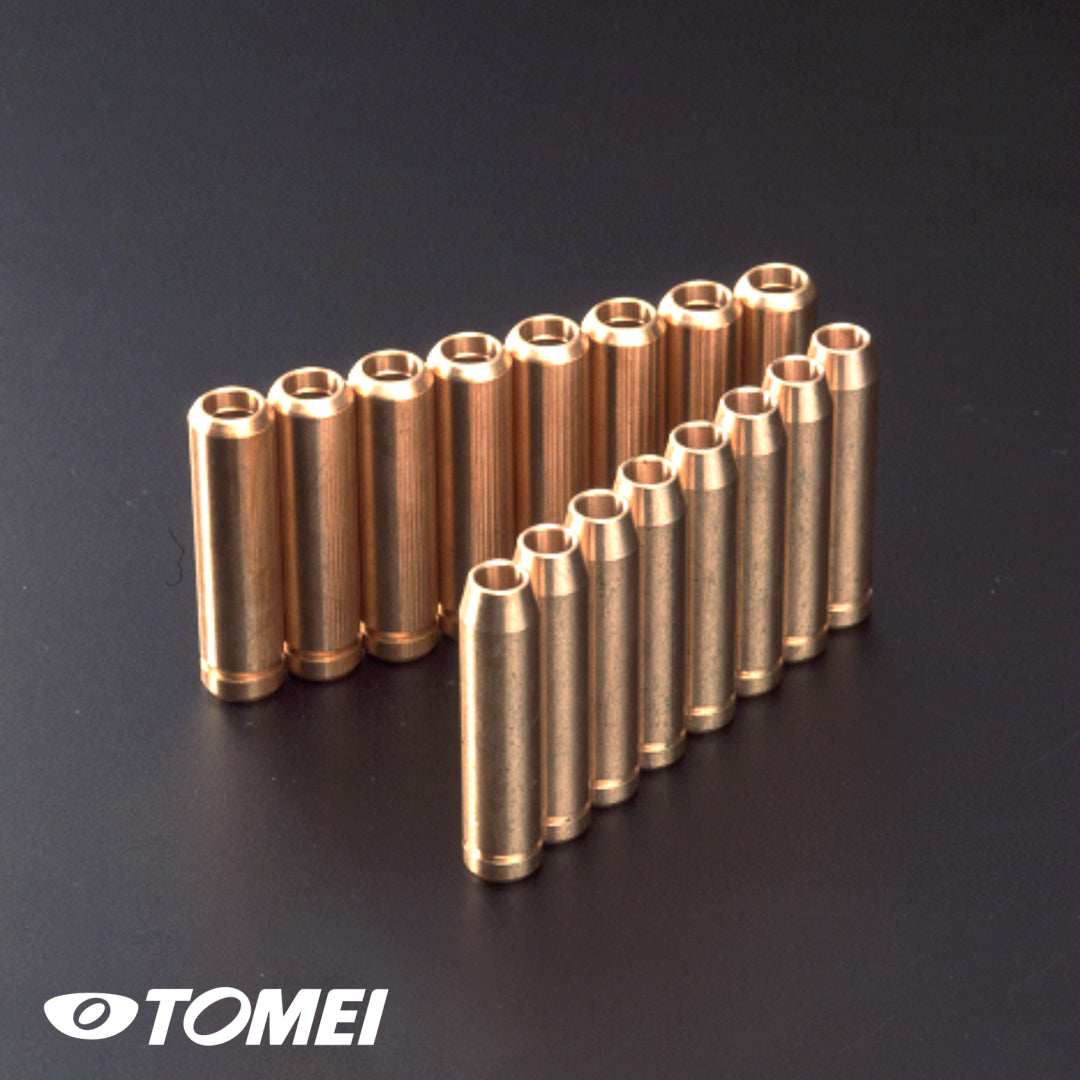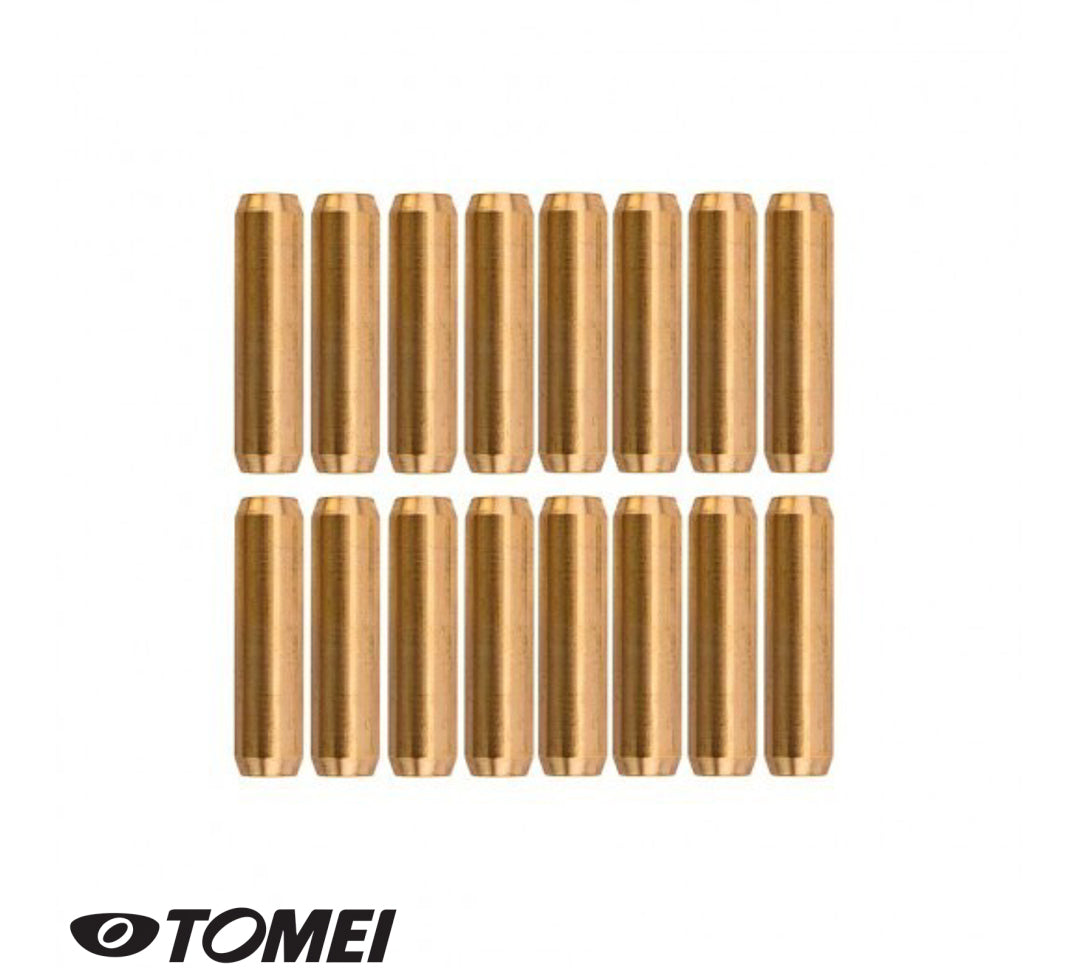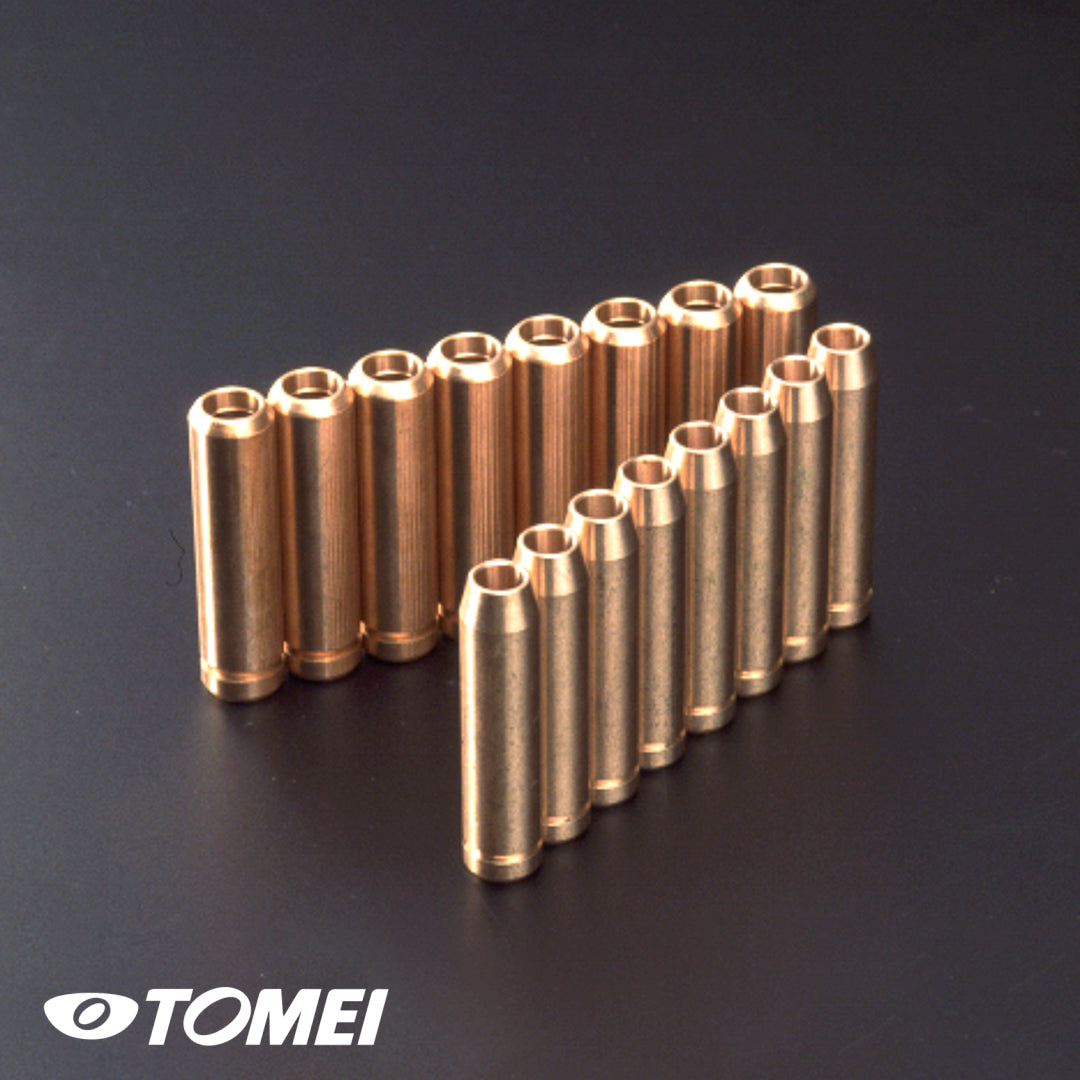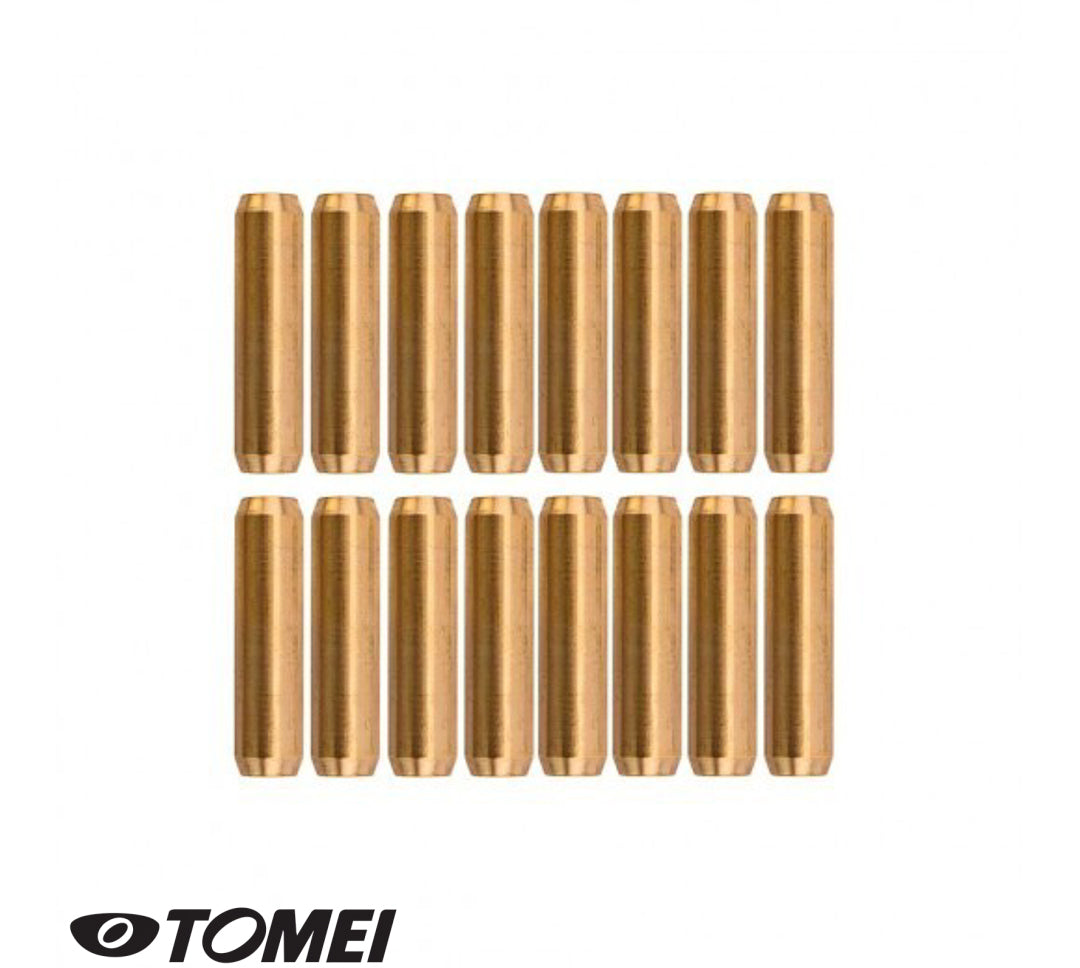Phosphorus Bronze Valve Guides 4B11 (Lancer Evolution X)
Phosphorus Bronze Valve Guides 4B11 (Lancer Evolution X)
Couldn't load pickup availability
In stock
The purpose of the valve guides is to help move heat from the valves to the cylinder head. This material was chosen of it's high strength, effective heat conductivity, and it's high resistance to abrasion. The stock valve guides are made from cost materials that are chosen for cost effectiveness over performance reasons. Which is fine for the stock power making factory engine. But not suitable for the high end tuned race engines, especially with tuned engines that are used for high engine speeds and high power outputs. The TOMEI phosphor bronze valve guides have efficient heat dissipation properties that allow the cylinder head to absorb the heat from the valves during high thermal conductivity. This increases the strength of the valve train even at higher temperatures, helps minimize the valve guides from cracking and will also extend the valves life.
| MATERIAL | 5191(Cn-Sn-P alloy) |
|---|---|
| TENSILE STRENGTH | 590~685(N/㎜2) |
| HARDNESS | 180~230(HB) |
Since this product is designed for use under extreme conditions, it still requires regular maintenance and periodic inspections. Depending on the environment and usage, it may experience accelerated wear. Some examples of abnormal conditions include:
- The rocker arm type assemblies will apply more lateral pressure, which will increase the wear rate. If the stem wall of the valve is rough, it will also contribute to the increased wear rate.
-
Using high lift, aggressive camshafts will also increase the wear rate.
- Excessive buildup of carbon will also hinder performance and increase wear rate. When there’s a small opening at the end, it will increase the carbon buildup rate as a funnel effect.
- The results from Valve Spring surging will cause the Valve to move on an angle. This will cause both ends to open up and create deformation. Then carbon can enter the valve guides more which will increase the wear rate.
- A defective seat cut. When the seat cut’s centerline across the main 45 degree face is offline from the valve stems centerline by more than 0.01mm, this can cause increased abnormal wear rate.
- If the clearance is not within the correct 0.03-0.04mm range. The Valve will rub against the guides inner wall, this degree angle in relation to the seat cut will cause it to shift by 0.01mm more than the clearance values. The guide will take the lateral pressure point and open up the opening. The buildup of carbon will increase in the newly formed gaps.
- A worn out used Valve. It’s possible to cut down by using the part that has not worn out the stem when changing to a high lift cams. The guides can wear out when the inappropriate clearances are made. (About 0.01mm out of clearance).
- The Valve design is defective. The difference from the dilatability and the guide being worn out abnormally is when the valve that is made with different alloys, will contribute with a faster deterioration.




